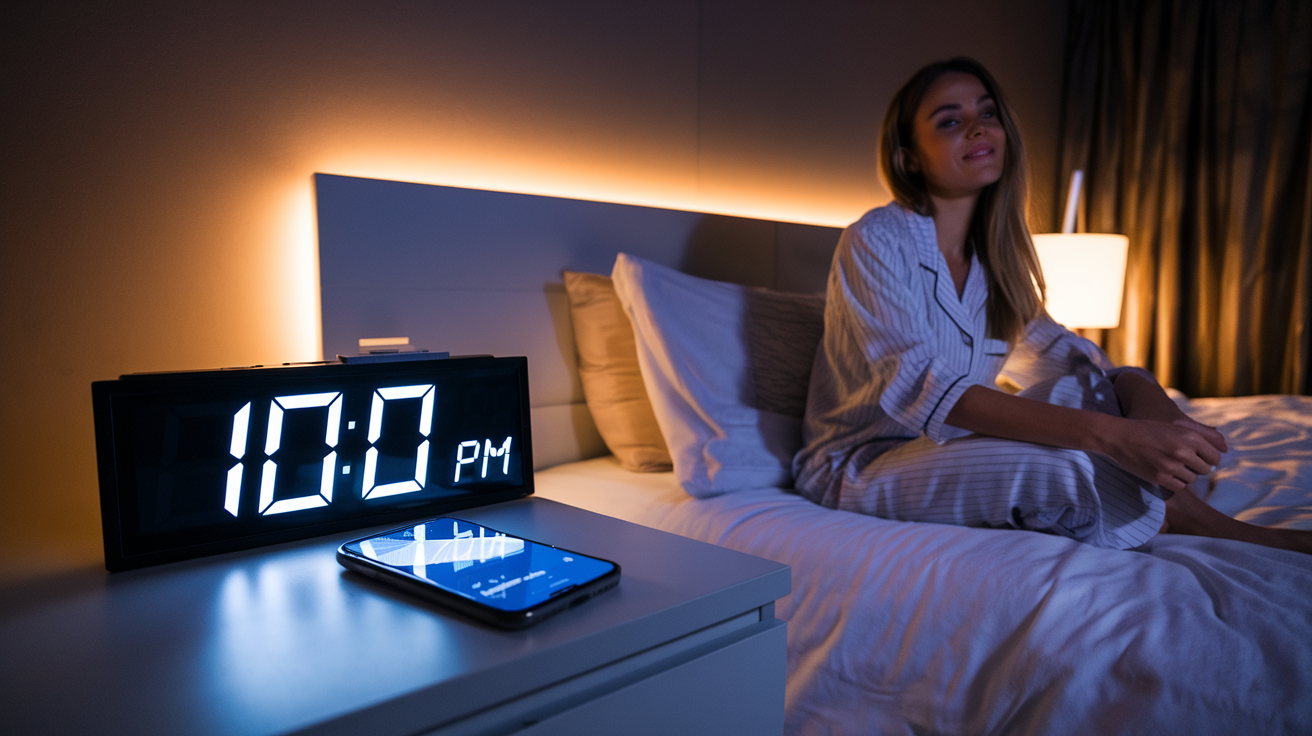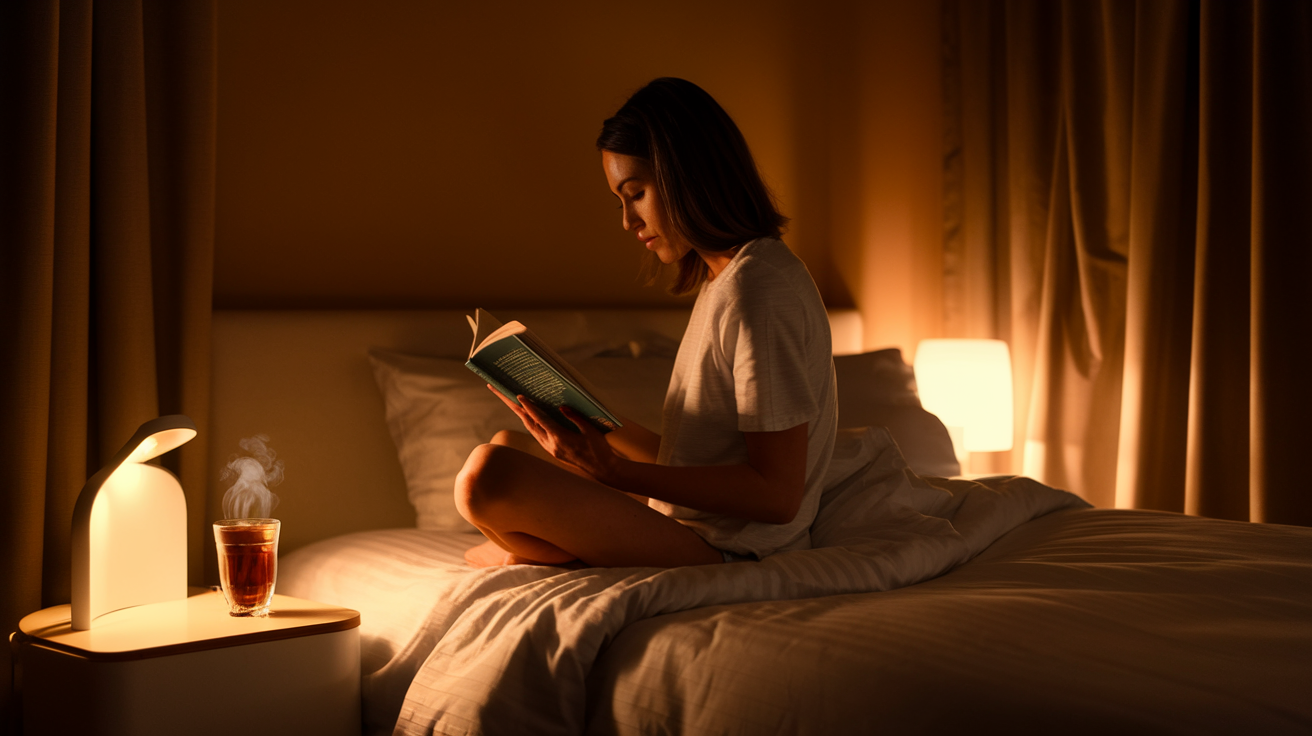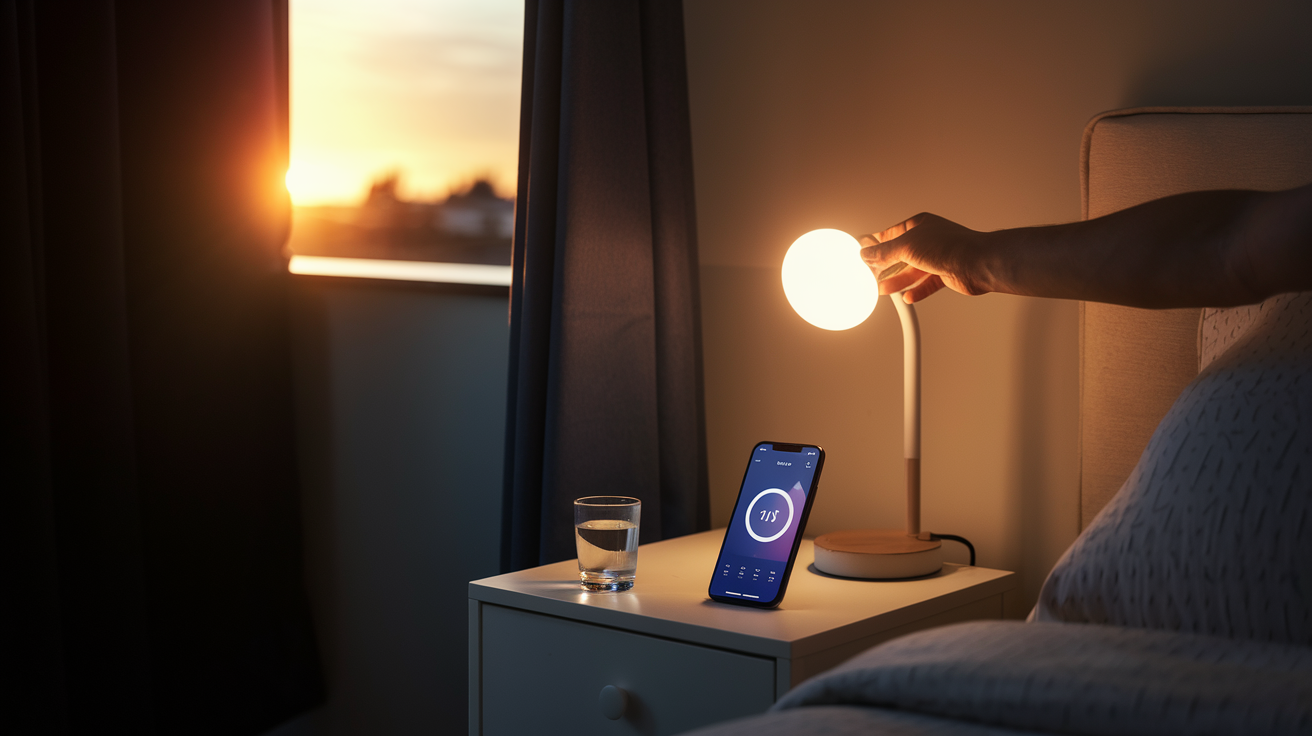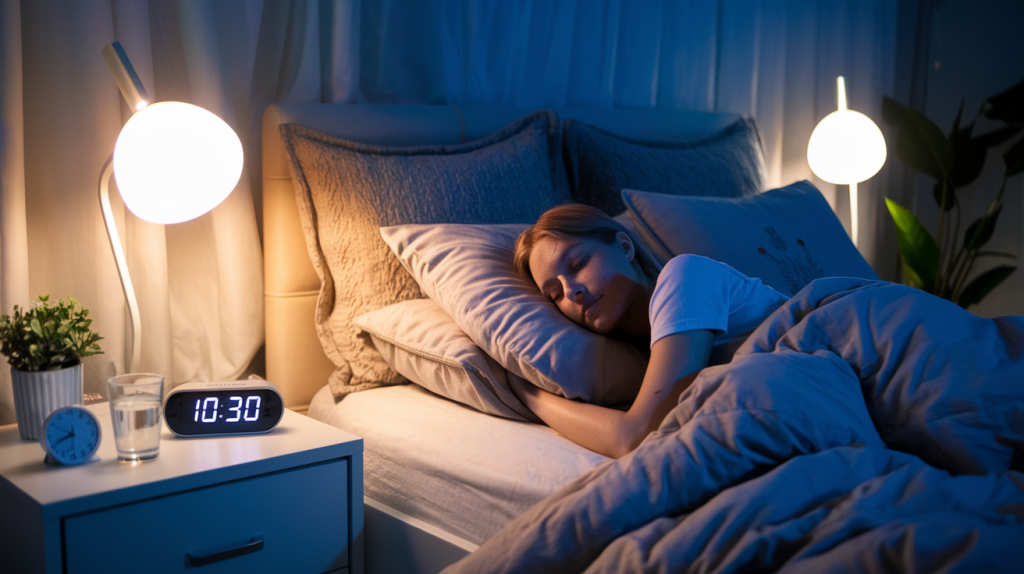Are you tired of tossing and turning all night, only to wake up feeling groggy and exhausted? 😴 You’re not alone. Millions of people struggle with getting quality sleep, impacting their health, productivity, and overall well-being. But what if we told you that better sleep is within your reach?
Imagine waking up refreshed, energized, and ready to tackle the day ahead. 🌞 It’s not just a dream – it’s a reality that can be achieved through science-backed methods. In this blog post, we’ll explore seven proven tips that can revolutionize your sleep habits and transform your nights from restless to restorative.
From establishing a consistent sleep schedule to harnessing the power of light, we’ll guide you through practical strategies that have helped countless individuals improve their sleep quality. Get ready to say goodbye to sleepless nights and hello to a well-rested, more vibrant you. Let’s dive into these game-changing sleep tips that will have you snoozing like a pro in no time!
Establish a Consistent Sleep Schedule

Set a fixed bedtime and wake-up time
Establishing a consistent sleep schedule is crucial for improving your sleep quality. The first step is to set a fixed bedtime and wake-up time. This helps regulate your body’s internal clock, also known as the circadian rhythm. Choose a bedtime that allows for 7-9 hours of sleep, and stick to it every night.
Stick to your schedule on weekends
It’s tempting to sleep in on weekends, but maintaining your sleep schedule even on days off is essential. Consistent sleep-wake times strengthen your circadian rhythm, making it easier to fall asleep and wake up naturally. Here’s a comparison of weekend sleep habits:
| Consistent Schedule | Inconsistent Schedule |
|---|---|
| Stable circadian rhythm | Disrupted circadian rhythm |
| Easier to fall asleep | Difficulty falling asleep |
| More refreshed upon waking | Grogginess and fatigue |
| Better overall sleep quality | Increased risk of sleep disorders |
Gradually adjust your schedule if needed
If your current sleep schedule needs adjustment, make changes gradually:
- Shift your bedtime by 15 minutes earlier or later each week
- Adjust your wake-up time accordingly
- Be patient and consistent with the changes
- Allow your body time to adapt to the new schedule
By implementing these strategies, you’ll be on your way to establishing a consistent sleep schedule that promotes better sleep quality and overall health. With your sleep schedule in place, let’s explore how to create a relaxing bedtime routine to further enhance your sleep experience.
Create a Relaxing Bedtime Routine

Dim the lights an hour before bed
Lowering the light levels in your home as bedtime approaches is a crucial step in preparing your body for sleep. This practice aligns with your body’s natural circadian rhythm, signaling that it’s time to wind down. Consider using dimmer switches or switching to low-wattage bulbs in the evening. Alternatively, use warm-colored lamps or candles to create a cozy atmosphere conducive to relaxation.
Practice gentle stretching or yoga
Incorporating light stretching or yoga into your bedtime routine can help release physical tension and promote relaxation. Focus on gentle movements that don’t overstimulate your body. Here’s a simple routine to try:
- Neck rolls
- Shoulder shrugs
- Gentle spinal twists
- Child’s pose
- Legs up the wall pose
Try meditation or deep breathing exercises
Meditation and deep breathing exercises are powerful tools for calming the mind and preparing for sleep. These practices can help reduce stress and anxiety, making it easier to fall asleep. Here’s a comparison of two popular techniques:
| Technique | Description | Benefits |
|---|---|---|
| 4-7-8 Breathing | Inhale for 4 counts, hold for 7, exhale for 8 | Reduces anxiety, promotes relaxation |
| Body Scan Meditation | Mentally scan your body from head to toe, releasing tension | Increases body awareness, reduces physical stress |
Avoid screens and electronic devices
The blue light emitted by electronic devices can interfere with your body’s production of melatonin, the sleep hormone. To optimize your sleep, try to avoid screens for at least an hour before bed. If you must use devices, consider using blue light filtering apps or glasses. Instead of scrolling through social media or watching TV, opt for relaxing activities like reading a book or listening to calming music.
Optimize Your Sleep Environment

Keep your bedroom cool and dark
Maintaining an optimal sleep environment is crucial for quality rest. A cool, dark bedroom can significantly improve your sleep quality. The ideal sleeping temperature ranges from 60°F to 67°F (15°C to 19°C). This temperature range helps your body naturally lower its core temperature, signaling that it’s time to sleep.
To achieve darkness, consider these options:
- Use heavy curtains or blackout shades
- Wear a comfortable sleep mask
- Remove or cover electronics with LED lights
Invest in a comfortable mattress and pillows
Your sleep surface plays a vital role in sleep quality. A supportive mattress and comfortable pillows can prevent pain and promote better sleep posture.
| Mattress Type | Benefits |
|---|---|
| Memory Foam | Contours to body, reduces pressure points |
| Innerspring | Provides bounce and support |
| Hybrid | Combines foam comfort with spring support |
| Latex | Offers natural cooling and durability |
Choose pillows that support your preferred sleep position to maintain proper spinal alignment.
Use white noise or earplugs to block out sounds
Ambient noise can disrupt sleep patterns. White noise machines or apps can mask disruptive sounds and create a consistent audio environment conducive to sleep. Alternatively, high-quality earplugs can effectively block out unwanted noise.
Consider using blackout curtains
Blackout curtains are an excellent investment for optimizing your sleep environment. They block out external light sources, which can interfere with your body’s natural sleep-wake cycle. This is particularly beneficial for shift workers or those living in areas with significant light pollution.
Watch Your Diet and Exercise

Watch Your Diet and Exercise
A. Avoid caffeine and heavy meals before bed
Caffeine and heavy meals can significantly disrupt your sleep quality. Caffeine, a stimulant found in coffee, tea, and some sodas, can stay in your system for up to 8 hours. To improve sleep quality, avoid consuming caffeinated beverages after 2 PM. Similarly, heavy meals before bedtime can cause discomfort and indigestion, making it difficult to fall asleep.
| Time | Recommended Action |
|---|---|
| After 2 PM | Avoid caffeine |
| 2-3 hours before bed | Avoid heavy meals |
B. Limit alcohol consumption
While alcohol may help you fall asleep faster, it can negatively impact your sleep quality. It disrupts your sleep cycle, particularly REM sleep, leading to less restful sleep. To optimize your sleep:
- Limit alcohol consumption to 1-2 drinks per day
- Avoid drinking alcohol within 3 hours of bedtime
- Stay hydrated by drinking water alongside alcoholic beverages
C. Exercise regularly, but not too close to bedtime
Regular exercise can improve sleep quality, but timing is crucial. Aim for at least 30 minutes of moderate exercise daily, but avoid vigorous workouts close to bedtime. Exercise raises body temperature and releases endorphins, which can interfere with sleep if done too late.
D. Try a light snack if hunger disrupts your sleep
If hunger pangs keep you awake, a light snack can help. Choose foods that combine complex carbohydrates and protein, which can promote sleep by increasing the production of serotonin. Some sleep-friendly snack options include:
- A small bowl of whole-grain cereal with milk
- A banana with a tablespoon of almond butter
- A small serving of Greek yogurt with berries
By managing your diet and exercise habits, you can significantly improve your sleep quality. Next, we’ll explore how to manage stress and anxiety, which are common culprits behind sleep disturbances.
Manage Stress and Anxiety

Keep a worry journal
Maintaining a worry journal can be an effective way to manage stress and anxiety that might be interfering with your sleep. Here’s how to implement this practice:
- Set aside time before bed to write down your worries
- Be specific about your concerns
- Prioritize your worries
- Brainstorm potential solutions
By externalizing your thoughts onto paper, you create mental space and reduce the likelihood of ruminating on concerns while trying to sleep.
Practice mindfulness techniques
Incorporating mindfulness into your routine can significantly improve sleep quality. Here are some science-backed mindfulness techniques:
| Technique | Description | Benefits |
|---|---|---|
| Deep breathing | Focus on slow, deep breaths | Reduces heart rate and blood pressure |
| Body scan | Mentally scan your body for tension | Promotes physical relaxation |
| Guided imagery | Visualize calming scenes | Distracts from anxious thoughts |
| Meditation | Practice focused attention | Improves overall stress management |
Consistent practice of these techniques can help quiet your mind and prepare your body for restful sleep.
Seek professional help if needed
If stress and anxiety continue to impact your sleep despite self-help strategies, it’s crucial to consider professional assistance. A mental health professional can provide:
- Cognitive Behavioral Therapy for Insomnia (CBT-I)
- Medication management if appropriate
- Personalized coping strategies
- Ongoing support and guidance
Remember, seeking help is a sign of strength, not weakness. With the right support, you can overcome sleep challenges and improve your overall well-being.
Limit Daytime Naps

Keep naps under 30 minutes
While naps can be beneficial, their duration is crucial. Limiting naps to 30 minutes or less helps avoid entering deep sleep, which can leave you feeling groggy and disoriented upon waking. Short naps, often called “power naps,” can boost alertness and productivity without interfering with nighttime sleep.
| Nap Duration | Benefits | Potential Drawbacks |
|---|---|---|
| 10-20 minutes | Improved alertness, reduced fatigue | Minimal risk of sleep inertia |
| 30 minutes | Enhanced cognitive performance | Slight risk of grogginess |
| 60+ minutes | Memory consolidation | High risk of sleep inertia, may interfere with night sleep |
Avoid napping late in the day
Timing is essential when it comes to naps. Late afternoon or evening naps can disrupt your natural sleep-wake cycle, making it harder to fall asleep at night. As a general rule, avoid napping after 3 PM to maintain healthy sleep habits.
Use power naps to boost alertness
Power naps can be a valuable tool for improving alertness and cognitive function. Here are some tips for effective power napping:
- Find a quiet, comfortable space
- Set an alarm for 20-30 minutes
- Try to relax quickly to maximize sleep time
- Upon waking, expose yourself to bright light
- Engage in light physical activity to shake off any grogginess
By following these guidelines, you can harness the benefits of napping without compromising your nighttime sleep quality. Next, we’ll explore how to use light to regulate your sleep-wake cycle effectively.
Use Light to Regulate Sleep-Wake Cycle

Get sunlight early in the day
Exposing yourself to natural sunlight early in the day is crucial for regulating your sleep-wake cycle. Aim for at least 30 minutes of outdoor light within the first hour of waking up. This exposure helps to reset your circadian rhythm and promotes better sleep at night.
Use light therapy boxes if needed
For those with limited access to natural sunlight, light therapy boxes can be an effective alternative. These devices simulate natural sunlight and can help maintain a healthy sleep-wake cycle, especially during darker winter months or for shift workers.
| Light Therapy Box Features | Benefits |
|---|---|
| 10,000 lux intensity | Mimics natural sunlight |
| Blue light spectrum | Regulates melatonin production |
| Adjustable brightness | Customizable to individual needs |
| Portable design | Convenient for travel or office use |
Reduce blue light exposure in the evening
As night approaches, it’s essential to limit exposure to blue light, which can interfere with melatonin production and disrupt your sleep cycle. Here are some strategies to reduce blue light exposure:
- Use blue light filtering apps or screen protectors on electronic devices
- Switch to warm, dim lighting in the evening
- Avoid screen time at least 1-2 hours before bed
- If necessary, wear blue light blocking glasses during evening hours
By implementing these light-based strategies, you can effectively regulate your sleep-wake cycle and improve your overall sleep quality. Next, we’ll recap the key points covered in this article to help you create a comprehensive sleep improvement plan.

Getting quality sleep is essential for our overall health and well-being. By implementing these seven science-backed tips, you can significantly improve your sleep quality and wake up feeling refreshed and energized. Establishing a consistent sleep schedule, creating a relaxing bedtime routine, and optimizing your sleep environment are crucial steps in enhancing your sleep habits. Additionally, paying attention to your diet and exercise, managing stress, limiting daytime naps, and using light to regulate your sleep-wake cycle can further contribute to better sleep.
Remember, improving your sleep is a journey that requires patience and consistency. Start by incorporating one or two of these tips into your routine and gradually build upon them. With time and dedication, you’ll be well on your way to achieving restful nights and more productive days. Sweet dreams!
